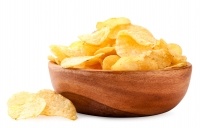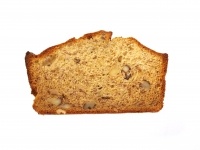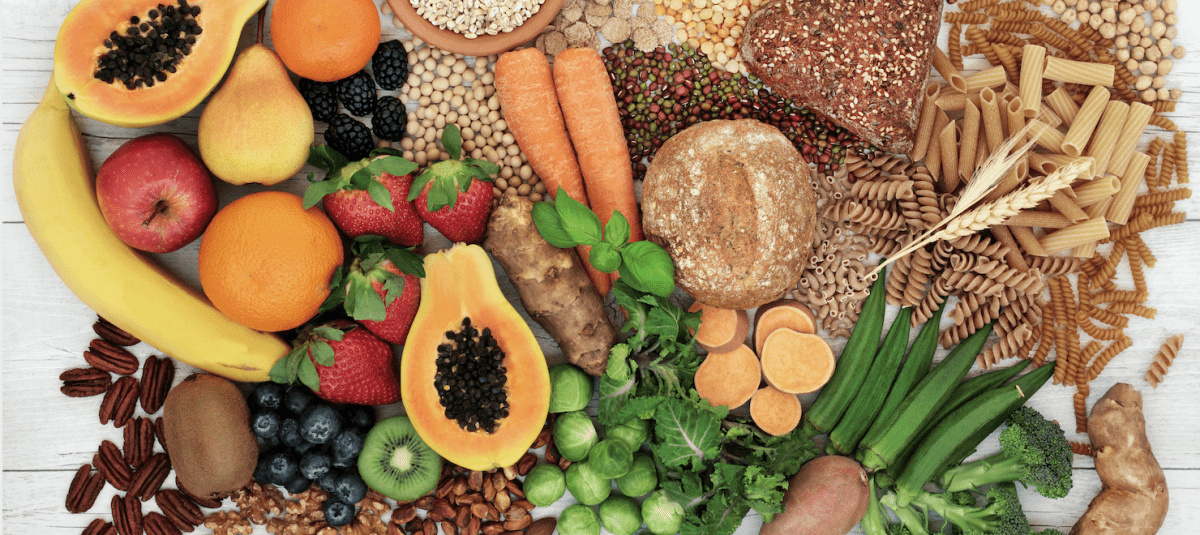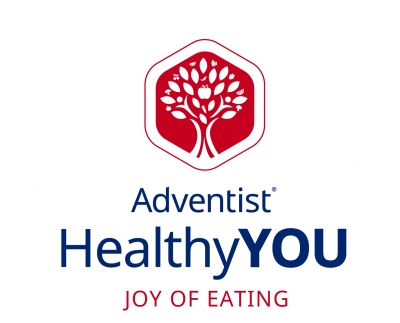Carbohydrates (aka carbs) are largely misunderstood and in the past decades have become the target of numerous fad diets. But are their claims valid? Are all carbs created equal? We will discuss the biblical and scientific evidence to debunk many of the myths related to carbohydrates and highlight the wonderful health benefits of eating whole foods that are rich in this nutrient.
What are Carbohydrates
There are six classes of nutrients our bodies require to sustain life: vitamins, minerals, water, carbohydrates, proteins, and fats. Vitamins and minerals are considered micronutrients, as we need them in small amounts. Water is considered a macronutrient and is the largest component of the human body, therefore being required in large amount.
Carbohydrates, proteins, and fats are considered macronutrients as we need them in larger amounts. They vary in function, but have in common the fact that they are “energy yielding” nutrients in the following amount:
| Carbohydrates | 4 calories per gram |
| Protein | 4 calories per gram |
| Fat | 9 calories per gram |
This already give us a clue that the claim that carbs per se cause more weight gain than other macronutrients is false. If one of the causes of weight gain is related to the excessive calorie consumption, the macronutrient that has the greater calorie density is not carbohydrates, but fat.
Carbohydrates exists in the form of sugar, starches, and fiber. However, these components are part of foods that most of the time also contain protein, fat, or both, so referring to certain foods as just ‘carbs’ is not accurate. The foods groups that are rich in carbohydrates are:
- Added Sugars: this is a term you find in food labels and it is the defined as sugars and syrups that are added to foods during processing or preparation(1), including white sugar, brown sugar, raw sugar, honey, molasses, maple syrup, coconut sugar, date sugar, corn syrup, corn-syrup solids, high-fructose corn syrup, malt syrup, maple syrup, pancake syrup, fructose sweetener, liquid fructose, honey, molasses, anhydrous dextrose, and crystal dextrose. Added sugars do not include naturally occurring sugars such as lactose in milk or fructose in fruits.
- Sugar Alcohols (aka polyols): carbohydrates with a hybrid chemical structure that partially looks like sugar and partially looks like alcohol. Despite the “alcohol” part of the name, they do not contain ethanol as alcoholic beverages do. Examples are: sorbitol, mannitol, xylitol, maltitol, maltitol syrup, lactitol, erythritol, isomalt and hydrogenated starch hydrolysates. These sugars partially resist digestion, so their calorie content ranges from 1.5 to 3 calories per gram compared to 4 calories per gram for other sugars. This form of sugar can be naturally occurring in fruits and vegetables, but it can also be manufactured from sucrose (table sugar), glucose, and different types of starch to be used in processed foods as a sweetener, bulking agent, to achieve a certain mouthfeel, to retain moisture in the product, and to prevent browning that can occur during heating.
- Grains and grain-based products: which can be whole grains (including wheat, barley, oats, rice, quinoa, millet, bulgur, and others) or refined grains (including white rice, white pasta, white bread, pastries, baked goods, and others).
- Beans (including soybeans), lentils, and peas.
- Fruits: fresh, dried, frozen, canned, and fruit juices.
- Starchy vegetables: including potatoes, yams, yucca, corn, winter squash, and others.
- Non-starchy vegetables: including green leafy vegetables, cruciferous vegetables (Arugula, cauliflower, cabbage, kale, bok choy, broccoli, brussels sprouts, and others), asparagus, artichoke, beets, tomatoes, peppers, yellow squash, zucchini, mushrooms, and others.
- Milk and yogurt (as they contain the sugar lactose) and foods made with these ingredients, including ice cream, puddings, and others. The exception is cheese and butter, which are both derived from milk, but the process to make them discards the lactose and concentrates the proteins and fats found in milk in the case of cheese, and concentrates the fats in the case of butter.
- Other: processed foods made with any of the food groups described will contain carbohydrates, although they may also contain protein and fat.
The Functions of Carbohydrates in the Body
The main role of carbohydrates is to provide energy to sustain the body’s functions, including respiration, circulation, digestion, physical activity, brain function, and protein synthesis(2). When these basic needs are met, any excess carbohydrates consumed is stored in the liver and muscle cells in the form of glycogen.(3) This storage is released during times when the amount of carbohydrates being consumed is less than the amount needed by the cells in the body such as during fasting and prolonged exercise.
How much Carbohydrate should we consume per day?
The Food and Nutrition Board of the Institutes of Medicine (IOM) sets the acceptable distribution range of macronutrient as the following(2):
- 45% to 65% of calories coming from carbohydrates
- 10% to 35% of calories coming from protein
- 20% to 35% of calories coming from fat (while limiting saturated fat and trans fats)
On average, children and adults need a minimum of 130 grams of carbohydrates each day in order to maintain adequate brain function.(1) But in order to provide for the energy needs of all the cells in the body that use glucose as their primary fuel, we need to eat more than the minimum amount. For example, the suggested range on this macronutrient on a 2,000-calorie diet would equal 225 and 335 grams of carbohydrate per day.
Based on national surveys, the general population meets the recommended range of intake for this macronutrient.(4) The question is, what type of carbohydrates are being consumed by the general population? Scientific evidence points to an excess of added-sugars and an insufficient intake of whole grains, fruits, and vegetables.(5) Research also shows that ultra-processed foods provide 58% of the energy intake in the American diet.(6)
The Good, the Bad, and the Ugly Carbohydrate-rich foods
“Why do you spend money for what is not bread,
And your wages for what does not satisfy?
Listen carefully to Me, and eat what is good,
And let your soul delight itself in abundance.”Isaiah 55:2
The concept of “good, bad, and ugly” related to foods may vary depending on the circumstance, and these terms should be avoided when dealing with those suffering from eating disorders. The intention of using this classification here is to emphasize the carbohydrate-rich foods that should be eaten more often and more freely versus the ones that should be limited or avoided to help prevent chronic diseases, which constitute seven out of the top ten leading causes of death in this country (7).
Good carbohydrate-rich foods are those that promote health benefits including the prevention, management and treatment of chronic diseases. They include foods in their unprocessed or minimally processed form, and prepared in a simple manner (when preparation is required) while maintaining the pleasure of eating. Examples include: fruits, vegetables (both starchy and non-starchy), whole grains and whole grain products that are minimally processed, beans, lentils, and peas.
Clinical trials have demonstrated that eating from these foods have a powerful effect in:
- Reducing the risk for depression.(8)
- Preventing chronic diseases in general (9)
- Reduce the risk of many types of cancer (9; 10)
- Preventing, managing or reversing diabetes type 2(11; 12) and heart disease(13).
- Reducing cholesterol and excess weight, as well as normalizing blood sugars(11; 12) without the need to restrict calories. Whole plant foods are packed with fiber and water, which helps us to naturally restrict how much we eat. Fiber slows down the emptying of the stomach, while water gives volume to these foods without adding calories. When these foods are highly processed they lose fiber and water, therefore, concentrating calories in a smaller volume. In addition, processed foods usually contain concentrated fats and sugars, which also contribute to a significant increase in the calories. See the two examples below comparing a whole carbohydrate-rich food on the left and a processed version of it on the right:
| Potatoes, Baked or Boiled | Potato Chips | |
|---|---|---|

(Without adding any source of fat) |

(Nutrients will vary by brand) |
|
| Portion | 100 g (3.5 oz) | 100 g (3.5 oz) |
| Water | 75 g | 2 g |
| Calories | 93 kcal | 532 kcal |
| Protein | 2 g | 6 g |
| Total fat | 2 g | 34 g |
| Carbohydrate | 21 g | 54 g |
| Fiber | 2 g | 3 g |
| Sugars | 1 g | 0 g |
| Banana, fresh | Banana loaf, commercial brand | |
|---|---|---|
 |
 |
|
| Portion | 100 g (3.5 oz) | 100 g (3.5 oz) |
| Water | 75 g | n/a |
| Calories | 89 kcal | 434 kcal |
| Protein | 1 g | 5 g |
| Total fat | 0 g | 24 g |
| Carbohydrate | 23 g | 50 g |
| Fiber | 3 g | 2 g |
| Sugars | 12 g | 12 g |
Source: USDA Food Database (numbers were rounded)
The following table contains a suggested amount to be consumed daily or weekly from the healthy carbohydrate-rich food groups and subgroups, adapted from the recommendations from the Dietary Guidelines for Americans at the 2,000-Calorie level. (5)
| Food Group or Subgroups | Daily or Weekly Ranges* |
|---|---|
| Vegetables | 2 ½ – 3 ½ cup equivalent / day |
| Dark Green Vegetables | 1 ½ – 2 ½ cup eq / week |
| Red and Orange Vegetables | 5 ½ cup eq / week |
| Other Vegetables, including cruciferous vegetables | 5 cup eq / week |
| Starchy Vegetables | 6 |
| Beans (including soybeans), Peas, and Lentils | 1 to 3 cup eq / week |
| Whole Grains | 7 ½ to 9 cup eq / day, cooked |
| Fruits | 2 – 3 cup eq / day |
* The Dietary Guidelines for Americans considers that part of the calories on a healthy diet, including vegetarian diets, come from what oils and “empty calories”, which are calories mostly from added sugar and saturated fats. On a 2,000-calorie diet, this amount can reach 430 calories, which is almost 25% of the calories.
Therefore, the higher number on the ranges on this table reflects the use of these calories toward these foods that are more nutrient-dense, to maximize disease prevention. Total vegetarian diets, which also eliminates dairy and eggs, should aim to be on higher end of the range for the beans, lentils, and peas group in order to get adequate protein.
“Bad” carbohydrate-rich foods include:
- Those that have been refined to the point of stripping most of the fiber and causing a significant loss of micronutrients. Examples are: white flours and products made with them (including white bread, baked goods, pastries, white flour tortilla, white rice, white pasta);
- Those that have added-sugar and/or saturated fat in high amounts, such as pastries, rich desserts, and others.
- Sugar-sweetened foods and beverages. Note that if the amount of added-sugar is minimal while the main ingredient is a whole-food and the product is minimally processed such as a tomato sauce or a whole wheat bread, those foods should be part of the good carbohydrates as they have a significant nutrient value and contribute to adding variety to the diet.
Chronic consumption of foods from this group has been linked to:
- Decline in cognitive function, with a warning that early exposure to these foods (including prenatal exposure) having the greatest negative impact (14).
- Depression and anxiety(8).
- Obesity (15)
- Type 2 Diabetes (16)
- Increased mortality from inflammatory diseases (17)
“Ugly” carbohydrate-rich foods are the ones that fall under the umbrella of ultra-processed foods. The list below – adapted from a study published in 2019 in the Journal of Public Health Nutrition (18) – presents some practical ways to identify them:
- Foods containing mostly ingredients that result from a series of industrial processes, requiring specialized equipment and technology, that would be difficult to replicate at home;
- Foods that require fractioning of whole foods into isolated substances, including chemical modifications of these substances;
- Food that undergo industrial techniques such as pre-frying;
- Foods that contain additives whose function is to enhance the flavor of the product making it hyper-palatable;
- Ingredients often include sugar, saturated fats or trans fats, and salt, usually in combination;
- Foods containing ingredients rarely used in homemade cooking such as high-fructose corn syrup, hydrogenated oils, and protein isolates;
- Food containing additives used as emulsifiers, anti-foaming, carbonating, and others. Generally, these additives are names you would not know what they are in the ingredients list.
Examples of these foods include sodas, candies, morning cereals, sweet or salty packaged snacks, pastries, cakes, instant sauces and soups, processed meats and reconstituted meat products (such as ‘nuggets’, ‘sticks’, ‘hot dogs’, ‘burgers’), frozen desserts, mass-produced baked goods and pastries, ‘fruit’ yogurts, ‘energy’ drinks, and many others.
These foods undergo multiple industrial processes (hence the ‘ultra-processed’ definition) with the intention to create highly profitable products by using low cost ingredients (such as high-fructose corn syrup instead of cane sugar), creating products with a long shelf-life (thus the extra salt and sugar used also as preservatives), ready-to-eat, and hyper-palatable. Taking the place of healthy foods, these foods contribute to the exponential rise of obesity and chronic diseases in this country and worldwide. A recent review article found that 37 of the 43 studies linked ultra-processed foods to at least one adverse health outcome. Among children and adolescents, these included asthma and cardio-metabolic risk. Among adults, these included overweight or obesity, type-2 diabetes, cancer, gastrointestinal disorders, depression, frailty, cardio-metabolic risk and cardiovascular diseases (19).

Does the Bible have anything to say about Carbohydrates?
“And God said, Behold, I have given you every herb yielding seed, which is upon the face of all the earth, and every tree, in which is the fruit of a tree yielding seed; to you it shall be for food:” Genesis 1:29
The Bible does not directly use the word “carbohydrates”, but as we consider the following passages, we can see that healthy carbohydrate-rich foods are part of God’s ideal diet for humans, as evidenced by:
- The original diet prescribed by God in the Garden of Eden (Genesis 1:29). [link to previous article on “True Joy”]
- The diet miraculously provided by God during the Exodus of Israel from Egypt, manna is described as having the taste of wafers made with honey (Exodus 16:31). Also, the manna ceased when God’s remnant people entered in the promised Land and could eat produce again (Joshua 5:12).
- The food stored by Joseph to prepare for the seven years of famine was corn (Genesis 41), highlighting the nutritional and environmental sustainability aspect of plant foods.
- The diet chosen by Daniel and his friends during their Babylonian captivity being a whole food plant-based diet and the superior health outcomes they experienced when compared to the other captives eating what seemed to be a more processed omnivore diet (Daniel 1).
- How God warns us about the deceptiveness of more refined foods (Proverbs 23:1-3).
- Honey is described as good (Proverbs 24:13), but because it is a more concentrated carbohydrate in the form of sugar, it should be eaten in moderation (Proverbs 25:16, 27).
- Bread, grains, fruits, vegetables, and lentils were staple foods consumed by God’s people (Genesis 19:3, Genesis 21:14, Genesis 25:34, Genesis 45:23, Acts 20:1, Deuteronomy 8:8, Ruth 1:22, Numbers 11:5, I Samuel 30:20).
- God’s plan of restoration involves going back to the original diet (Revelation 21:1, 4; Revelation 22:2, 14; Isaiah 65:17, 21, 22)
Summary
- Focus your carbohydrate choices mostly from unprocessed or minimally processed foods, such as whole grains, beans, lentils, peas, fruits, and vegetables.
- Make sure the number of calories you are consuming from foods in general – including carbohydrates – matches your daily activity level. If you have excess body fat and are trying to lose weight, adjusting your portions may be needed but also focusing on selecting more foods from the lowest caloric dense groups, which are fruits and vegetables. Aim to fill at least half of your plate with a combination of these two food groups at your meals.
- Vary your choices as much as possible, within each category of carbohydrate-rich foods, to ensure a variety of vitamins, minerals, phytochemicals, and fibers are being consumed.
It is justifiable to avoid or at least limit carbohydrate-rich foods that are refined or ultra-processed, but avoiding healthy carbohydrate-rich foods can be detrimental to our health. Make peace with the healthy carbohydrates, enjoy the bountiful variety of delicious and nutritious foods God created to give us an abundant life.

References
- Medicine Io (2005). Dietary Reference Intakes for Energy, Carbohydrate, Fiber, Fat, Fatty Acids, Cholesterol, Protein, and Amino Acids. Washington, DC: The National Academies Press.
- Trumbo P, Schlicker S, Yates AA et al. (2002). Dietary reference intakes for energy, carbohydrate, fiber, fat, fatty acids, cholesterol, protein and amino acids. J Am Diet Assoc 102, 1621-1630.
- Medicine L (2020). The Functions of Carbohydrates in the Body. https://chem.libretexts.org/@go/page/1848 (accessed Retrieved March 5, 2021)
- U.S. Department of Agriculture ARS (2020). Energy Intakes: Percentages of Energy from Protein, Carbohydrate, Fat, and Alcohol, by Gender and Age, What We Eat in America, NHANES 2017-2018.
- Agriculture. USDoHaHSaUSDo (2020). 2020 – 2025 Dietary Guidelines for Americans, 9th Edition. www.dietaryguidelines.gov.
- Monteiro CA, Cannon G, Levy RB et al. (2019). Ultra-processed foods: what they are and how to identify them. Public Health Nutrition 22, 936-941.
- CDC (2021). Leading Causes of Death. www.cdc.gov/nchs/fastats/leading-causes-of-death.htm
- Marx W, Moseley G, Berk M et al. (2017). Nutritional psychiatry: the present state of the evidence. Proc Nutr Soc 76, 427-436.
- Melina V, Craig W, Levin S (2016). Position of the Academy of Nutrition and Dietetics: Vegetarian Diets. Journal of the Academy of Nutrition and Dietetics 116, 1970-1980.
- Miles FL, Lloren JIC, Haddad E et al. (2019). Plasma, Urine, and Adipose Tissue Biomarkers of Dietary Intake Differ Between Vegetarian and Non-Vegetarian Diet Groups in the Adventist Health Study-2. The Journal of Nutrition 149, 667-675.
- Porrata-Maury C, Hernández-Triana M, Ruiz-Álvarez V et al. (2014). Ma-Pi 2 macrobiotic diet and type 2 diabetes mellitus: pooled analysis of short-term intervention studies. Diabetes Metab Res Rev 30 Suppl 1, 55-66.
- Wright N, Wilson L, Smith M et al. (2017). The BROAD study: A randomised controlled trial using a whole food plant-based diet in the community for obesity, ischaemic heart disease or diabetes. Nutr Diabetes 7, e256.
- Esselstyn CB, Jr., Ellis SG, Medendorp SV et al. (1995). A strategy to arrest and reverse coronary artery disease: a 5-year longitudinal study of a single physician’s practice. J Fam Pract 41, 560-568.
- Hawkins MAW, Keirns NG, Helms Z (2018). Carbohydrates and cognitive function. Curr Opin Clin Nutr Metab Care 21, 302-307.
- Bradley P (2019). Refined carbohydrates, phenotypic plasticity and the obesity epidemic. Med Hypotheses 131, 109317.
- Aune D, Norat T, Romundstad P et al. (2013). Whole grain and refined grain consumption and the risk of type 2 diabetes: a systematic review and dose-response meta-analysis of cohort studies. Eur J Epidemiol 28, 845-858.
- Buyken AE, Flood V, Empson M et al. (2010). Carbohydrate nutrition and inflammatory disease mortality in older adults. The American Journal of Clinical Nutrition 92, 634-643.
- Monteiro CA, Cannon G, Levy RB et al. (2019). Ultra-processed foods: what they are and how to identify them. Public Health Nutr 22, 936-941.
- Elizabeth L, Machado P, Zinöcker M et al. (2020). Ultra-Processed Foods and Health Outcomes: A Narrative Review. Nutrients 12.


[…] * Fruits contain a negligible amount of protein, although they contribute with other important nutrients as discussed in other articles (See “Making Peace with Carbohydrates”) […]
[…] Carbohydrates (read article) […]
[…] Sugar is a basic unit that forms all types of carbohydrates present in fruits, vegetables, milk (including human milk), and starchy foods (such as grains, legumes, starchy vegetables, nuts, and seeds). When these foods are digested, the different types of carbohydrates end up as the most basic sugar units: glucose, galactose, or fructose [1]. For a deeper understanding on carbohydrates in general please read the article Making Peace with Carbohydrates. […]